Blossom Smart Watering Controller Review
by Ganesh T S on August 28, 2015 8:10 AM EST
Introduction and Component Analysis
Home automation has garnered renewed attention, thanks to the Internet of Things (IoT) revolution. Many vendors targeting this market look to deliver solutions for aspects appealing to a broader audience. Some examples include lighting, temperature control, security using IP cameras etc. Irrigation control is a niche within the home automation niche. At first glance, it appears to be a limited market, as only those with gardens big enough to require scheduled / automated watering of multiple zones might need it. Surprisingly, there are many options for people looking to gain IP control over their irrigation / watering system's functioning. iConservo's Blossom is one such option. It is one of the very few crowd-funding projects that actually managed to ship on schedule.
An irrigation system in the typical US home takes water from the main line through a backflow prevention device and supplies it to one or more sprinkler valves. These sprinkler valves can be controlled using low voltage (typically 24V) electrical current from an irrigation controller. Traditional irrigation controllers (i.e, those designed prior to the smartphone age) rely on a complex interface to set up the schedule. For example, the 'programming interface' for the Hunter Pro-C (which was replaced by the Blossom Smart Watering Controller in our review setup) is shown below. Operation without going through a manual at least once is quite difficult.
The Hunter Pro-C that was replaced by the Blossom Smart Watering Controller
The sets of sprinkler(s) connected to the valve(s) that can be turned on with the same signal constitute an irrigation zone. The irrigation controller is the brains behind the whole irrigation system, as it handles the scheduling related to the activation and deactivation of each zone. Controllers are marketed based on the number of zones they can support. While the sprinklers and valves may be spread all over the garden, consumers usually opt to keep the controller in the garage (since it needs to be near a power outlet)
The technical specifications of the Blossom Smart Watering Controller, as provided in their marketing collateral, is reproduced below.
There are a number of popular irrigation controllers in the market. Blossom tries to differentiate itself with a unique set of features that don't seem to be present together in any other offering. These include:
- IP54 rating for outdoor installation (high level of protection against particles and a fair amount of protection against water)
- Communication via either Wi-Fi or powerline (useful in the case that the unit is mounted out of reach of a stable and strong Wi-Fi signal)
- Automated weather intelligence via the cloud (for example, scheduled watering could be turned off in the case of rainfall)
Blossom's marketing collateral also provides a handy comparison table that has been reproduced (with slight modifications) below.
Blossom claims to have a web app (marked 'Coming Soon') in their version of the above table. I have taken the liberty to alter it as control via a web browser is not currently available.
Designing a network-connected irrigation controller to operate on a schedule is not rocket science (from a hardware viewpoint). Consumers familiar with microcontrollers and relays may find a DIY solution to be more exciting. Based on FCC filings and a press release, we determined that the Blossom uses the following hardware:
- AzureWave AW-CU282 Wi-Fi SoC module
- Qualcomm Atheros QCA7000 HomePlug powerline communication IC
The AzureWave Aw-CU282 Wi-Fi SoC solution targeting the IoT market consists of the Marvell 88MC200 microcontroller and a Marvell 88W8792 1x1:1 802.11abgn Wi-Fi chip. The microcontroller integrates a 200 MHz Cortex-M3 core and 1MB of flash memory. It also supports up to 63 GPIOs (general-purpose IOs), and this comes in handy when attempting to interface with the electrical relays on the board.
The Qualcomm Atheros QCA7000 is compliant with HomePlug Green PHY specifications and comes with an integrated AFE (analog front end), making it suitable for energy management / home automation purposes. Transfer rates are of the order of 4 - 10 Mbps, but, Blossom doesn't need much bandwidth (only the schedules need to be set).
The low power nature of all the components in the unit ensures that this always-on device is a green one.


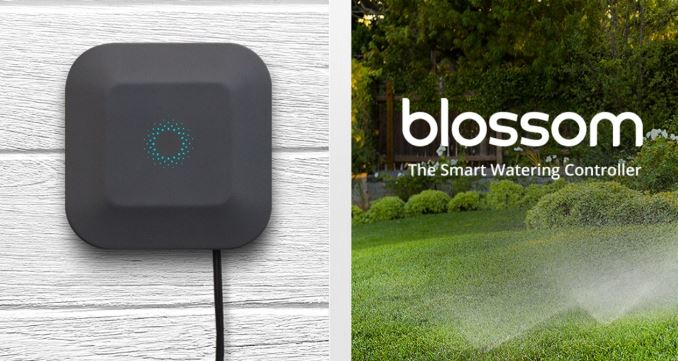
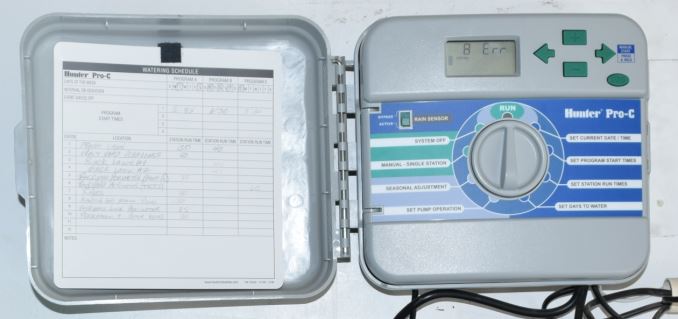
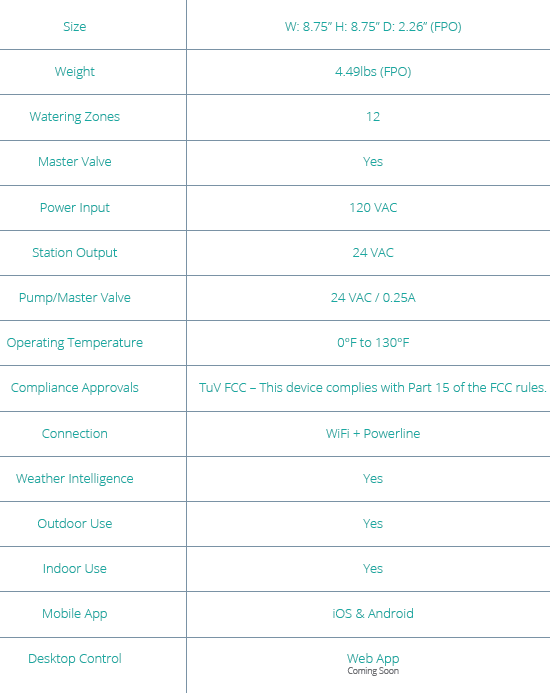
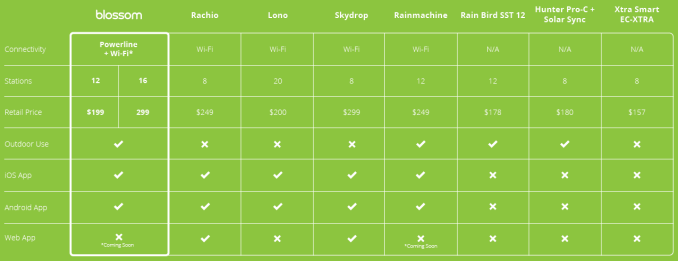
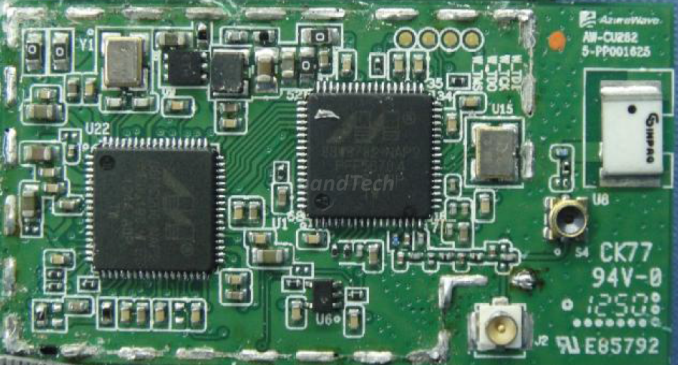

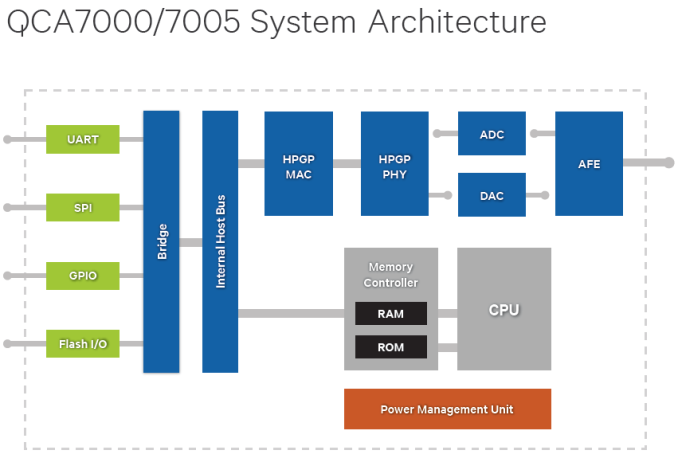








47 Comments
View All Comments
Pfm - Saturday, August 29, 2015 - link
As someone who did create his own smart controller, I am surprised by this comment.The hardware was easy enough: raspberry pi, relay board. I even found a way to "upgrade" my old controller by removing its logic board and connecting its triac board to another raspberry pi. With some experience the total cost goes down to around $75.
I wanted a web interface for ease of use, automatic weather adjustments and activity log. I also added automatic generation of soak periods to avoid runoffs. This eliminated the easy cron job edited with vi through ssh.
Even taking shortcuts (fetch an existing weather index from the Internet) this was much much more than a few hours of coding.. I guess the author of that comment most probably never built his own, or did not really read the article in full. Or both.
easp - Monday, August 31, 2015 - link
Or doesn't realize that even if one knows how to make something, knowing what to make is still a challenge. Getting someone else to make it in volume, at low cost? Another challenge, and selling it, yet another challenge.Samus - Saturday, August 29, 2015 - link
what the fuck ddriver, you act like every store should be a 1980's radio shack and we should just buy our own parts to assemble hair dryers, smoke detectors and light timers because...why should someone else conveniently make it and charge a few bucks profit?should we have no products and just parts for anything that can be made off-the-shelf? that's a ridiculous concept, some people are busy at their profession doing what they do best, no time to futz around building crap. it's the same reason I rarely even work on my own cars anymore. I make $150/hr. why would I take off work or waste time I could be spending with my kids when I can just pay a mechanic $85/hr to do it?
Samus - Saturday, August 29, 2015 - link
Sorry ryan for swearing in my above comment. I wasn't aware it violated the rules.easp - Monday, August 31, 2015 - link
Hmm, so I'm not sure that a newbie could design this in a few hours, but you seem pretty confident, so you must really know your stuff. So when can we expect to see you entering the market and kicking their asses? Personally, I think you are full of it, but if you pull it off, I'll will waste no time admitting I was wrong.hbsource - Friday, August 28, 2015 - link
Or, you could just live in the UK.puck - Friday, August 28, 2015 - link
I have been using a Blossom for about 6 months now. I love the hands-off nature of set-it-and-forgot-it but I have a few nit picks.No web interface, which has been detailed in the review.
Short power cord, had to relocate from my old controller location.
Cloud scheduling - leaves a lot to be desired. What are they basing the schedule on? My unit waters frequently when I just received a lot of rain. I had to turn off the whole unit for a week once because it just kept scheduling cycles when I was getting tons of rain. I have my smart watering needs set to realistic needs, and if I decrease it then seems to never come on and my grass gets brown. To me it's not really 'smart' enough and should have an option to take input from a local rain gauge.
Murloc - Friday, August 28, 2015 - link
yeah this is something that you set up and then leave running for years, so they should allow fine-tuning for the people who want it.Mondozai - Friday, August 28, 2015 - link
I really enjoyed this review. I don't need this kind of system as of now, I live in an apartment, but it's nevertheless cool to see Anandtech expand beyond the core tech of PCs. As IOT devices proliferate, I hope to see Anandtech keeping up with the trend. Covering both the terrabad devices you should avoid as well as recommending the ones you should buy.As you can judge by this comment section, everything that is new and unknown brings with it a reactionary knee-jerk response. That won't change for a few years, but as IOT devices become better and more affordable, even the reactionaries will slowly understand that they are behind the times.
Thankfully, AT isn't, and this review is a sign of that. KUTGW.
V900 - Friday, August 28, 2015 - link
Your comment reads as something from Popular Science in the late 40ies/early 50ies:"As you can judge by this readers letters section, everything that is new and unknown brings with it a reactionary knee-jerk response. That won't change for a few years, but as nuclear devices become better and more affordable, we will soon see nuclear airliners, nuclear trains and cars, and every neighbourhood powered by its own small, nuclear reactor. Then even the reactionaries will slowly understand that they are behind the times."
I'm afraid it's you who is behind the times. The idea of technology being an end unto itself, had its heyday almost a century ago. Today, experience has taught us that not every technological fad makes sense, and it takes more than buzzwords and an industry looking for an easy windfall to make a given technology a reality.